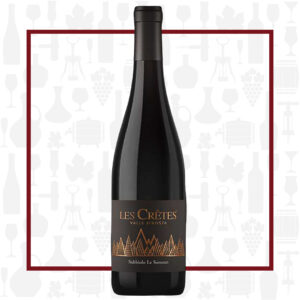Cellar Profile
In the mid 1700s, Bernardin Charrère moved from the Haute Savoie in Southeast France to the Aosta Valley and established Les Crêtes, a mill and farm in Aymavilles. This was in the middle of the 21 square mile Aosta Valley, in the heart of the wine region. In 1810, the family planted 2 hectares of vinifera grapes and the winery was born. The family still continues to craft wines from those vineyards to this day. Consistently recognized as the finest producer in the region, this is a boutique estate by international standards, but the largest privately-owned winery in Val d’Aosta. Working with the Italian government and other tiny vignerons in the region, Les Crêtes has been a pioneer in searching out rare, indigenous vinifera varieties — grapes like Petit Rouge, Mayolet, Prie Blanc, Premetta and Fumin, which exist nowhere else in the world — and helping protect them from extinction. This is one of the most challenging regions on earth to work for wine, with noncontiguous vineyards frequently planted on ledges on the side of steep Alpine mountains where they can find a little sandy soil. Hot summer days and extremely cool nights, coupled with a dry growing season allow for some of the longest hang times on earth. Their wines are powerful yet elegant, with trademark salty minerality – a true representation of this unique Alpine terroir.
Region
Surrounded by the Alps, the Valle d’Aosta is home to the highest elevated vineyards in all of Europe. The region is divided into three main vineyard areas: the upper valley,Valdigne; the central valley; and the lower valley. Most vineyards in the Aosta Valley occupy the steep, south-facing slopes above the Dora Baltea river, a tributary of the Po. The dramatic topography and diminutive size of the valley mean that the area available for viticulture is limited. Much of the valley floor, with its mineral-rich, well-watered soils, is simply too fertile for quality viticulture. As a result, many of the best vineyards here are on the lower slopes, and climb steadily up the slopes to top altitudes of around 1300m above sea level.
Vineyard
The Arnad and Issogne vineyards, located in the southwest of the valley, are comprised of glacial, alluvial sediment. The vines average 30 years of age and are trained in the French Guyot method.
Varieties
Nebbiolo is the grape variety behind the top-quality red wines of Northwestern Italy. Nebbiolo wines are distinguished by their strong tannins, high acidity and distinctive scent, often described as ‘tar and roses’. Sensitivity to terroir is one of Nebbiolo’s trump cards, but also its downfall. It is famously picky about where it grows, requiring good drainage and a long, bright growing season.
Winemaking
The fruit is harvested manually from the end of October to the beginning of November. Gentle pressing followed by a 20 day fermentation in stainless steel. Aged 12 months in 2500 litre barrels.
Tasting Notes
Bright ruby in the glass with cherry, plum and balsamic notes on the nose. The palate is juice, precise and savoury. Elegantly structured with red cherry, crushed strawberry and star anise alongside fine-grained tannins and fresh acidity.

 info@buyersandcellars.ca
www.buyersandcellars.ca
info@buyersandcellars.ca
www.buyersandcellars.ca